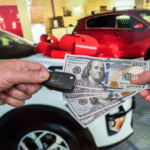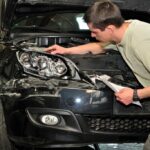
Dynamic Radar Cruise Control (DRCC): Revolutionizing the Driving Experience
In the realm of automotive innovation, Dynamic Radar Cruise Control (DRCC) emerges as a pioneering technology designed to redefine the driving experience. As part of the advanced driver assistance systems (ADAS) suite, DRCC not only maintains a vehicle’s speed but also adjusts it to keep a safe distance from the vehicle ahead. This article delves into the essence of DRCC, exploring its functionality, benefits, and operational nuances to provide drivers with a comprehensive understanding of how this technology revolutionizes road safety and comfort.
Understanding Dynamic Radar Cruise Control
Dynamic Radar Cruise Control is an enhanced form of traditional cruise control that employs radar technology and, in some cases, camera systems to monitor the road ahead. It automatically adjusts the vehicle’s speed to maintain a pre-set distance from the car in front, slowing down when the distance decreases and accelerating back to the set speed when the road is clear. DRCC is especially beneficial in varied traffic conditions, reducing driver fatigue and contributing to a safer driving environment.
Key Benefits of DRCC
- Enhanced Safety: By maintaining a safe following distance, DRCC minimizes the risk of rear-end collisions, especially in stop-and-go traffic conditions.
- Reduced Driver Fatigue: DRCC alleviates the need for constant acceleration and braking, making long drives and heavy traffic situations less taxing for drivers.
- Improved Fuel Efficiency: By optimizing speed adjustments and reducing unnecessary acceleration, DRCC can contribute to improved fuel efficiency, offering economic and environmental advantages.
- Seamless Driving Experience: DRCC facilitates a smoother driving experience, providing a sense of comfort and control that traditional cruise control systems cannot match.
How Does DRCC Work?
DRCC uses a radar sensor located at the front of the vehicle to detect vehicles ahead and measure their speed and distance. This information is then processed to adjust the vehicle’s speed accordingly. Here’s a step-by-step breakdown of its operation:
- Activation: The driver activates DRCC and sets a desired speed.
- Detection: The radar sensor continuously scans the road ahead for vehicles.
- Adjustment: When a slower-moving vehicle is detected in the same lane, DRCC automatically reduces the car’s speed by decelerating or applying the brakes gently.
- Acceleration: Once the lane is clear, DRCC accelerates the vehicle back to the pre-set speed.
Tips for Using DRCC Effectively
- Stay Engaged: While DRCC offers significant assistance, drivers should remain attentive and ready to take control of the vehicle at any moment.
- Understand Limitations: DRCC may have limitations in certain conditions, such as inclement weather, sharp curves, or when lane markings are unclear. It’s crucial to be aware of these limitations and drive accordingly.
- Adjust Settings: Many vehicles allow drivers to adjust the following distance settings. Familiarize yourself with these options and set them according to your comfort level and driving conditions.
- Regular Maintenance: Ensure that the radar sensor and other components related to DRCC are regularly checked and maintained for optimal performance.
Questions About DRCC
- Can DRCC stop the vehicle completely? Some advanced DRCC systems can bring the vehicle to a complete stop in traffic and resume driving when traffic moves, while others may require driver intervention. Check your vehicle’s manual for specific capabilities.
- Is DRCC suitable for all driving situations? DRCC is particularly beneficial in highway and freeway conditions. It’s less suited for city driving where pedestrian crossings and stop-and-go traffic are common.
- How does DRCC differ from Adaptive Cruise Control (ACC)? DRCC is essentially Toyota’s branding for its version of Adaptive Cruise Control, a term more widely used across the automotive industry.
Dynamic Radar Cruise Control represents a significant leap forward in the evolution of cruise control systems, offering drivers an unmatched blend of safety, convenience, and efficiency. By understanding the functionality and benefits of DRCC, drivers can maximize the use of this technology, making every journey safer and more enjoyable. As automotive technology continues to advance, systems like DRCC pave the way for a future where driving is not just about reaching a destination but doing so with greater ease, safety, and satisfaction.





